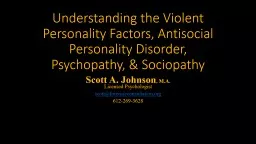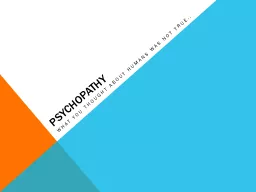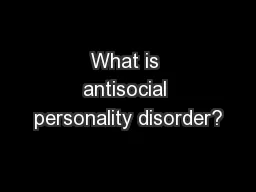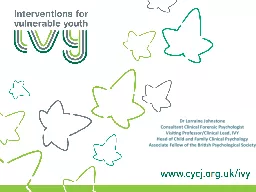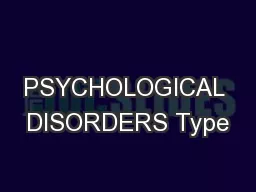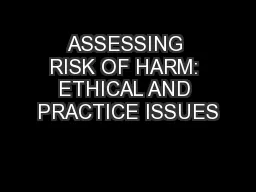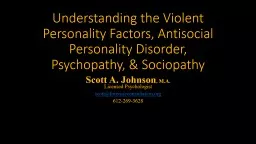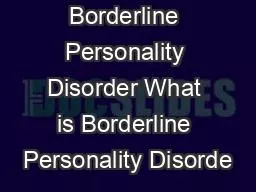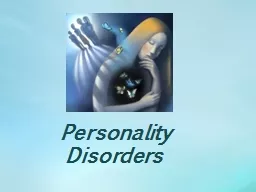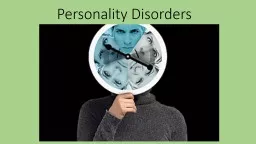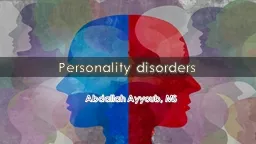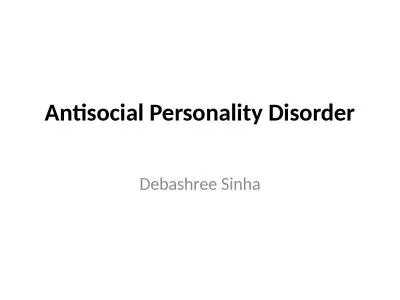PPT-Understanding the Violent Personality Factors, Antisocial Personality Disorder, Psychopathy,
Author : lois-ondreau | Published Date : 2019-01-29
Scott A Johnson MA Licensed Psychologist scottforensicconsultationorg 6122693628 This PowerPoint is copyrighted Do not duplicate without permission The accompanying
Presentation Embed Code
Download Presentation
Download Presentation The PPT/PDF document "Understanding the Violent Personality Fa..." is the property of its rightful owner. Permission is granted to download and print the materials on this website for personal, non-commercial use only, and to display it on your personal computer provided you do not modify the materials and that you retain all copyright notices contained in the materials. By downloading content from our website, you accept the terms of this agreement.
Understanding the Violent Personality Factors, Antisocial Personality Disorder, Psychopathy,: Transcript
Download Rules Of Document
"Understanding the Violent Personality Factors, Antisocial Personality Disorder, Psychopathy,"The content belongs to its owner. You may download and print it for personal use, without modification, and keep all copyright notices. By downloading, you agree to these terms.
Related Documents

